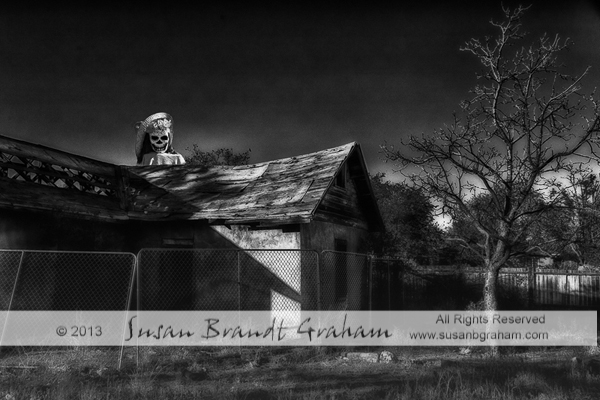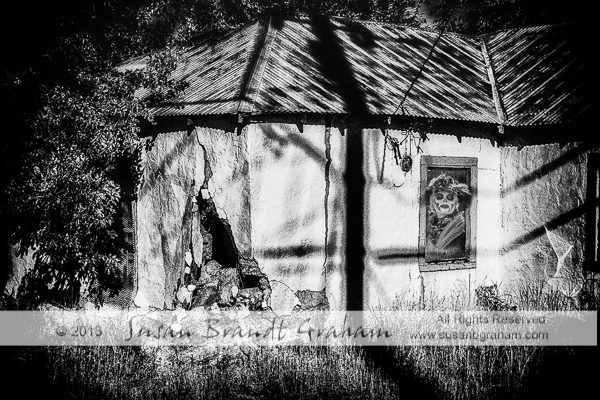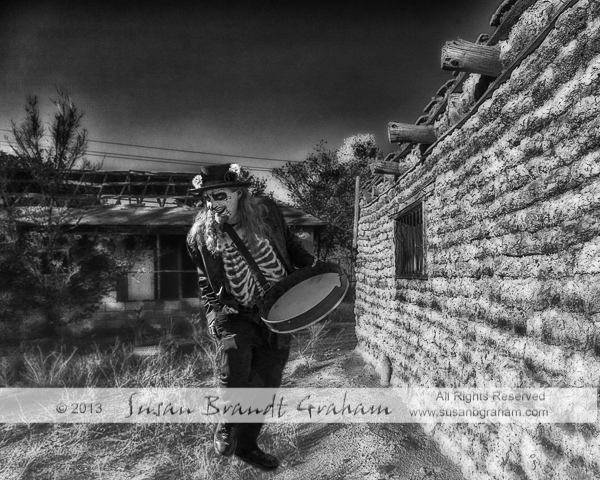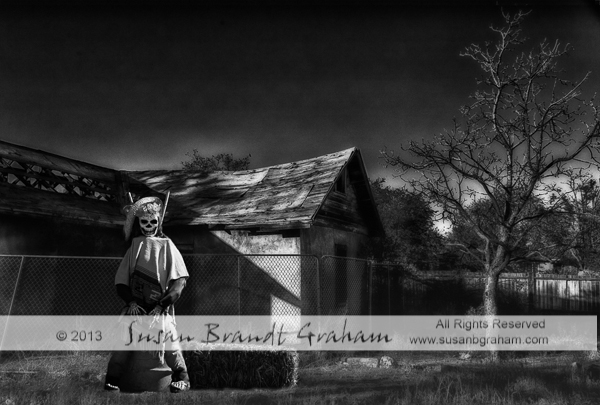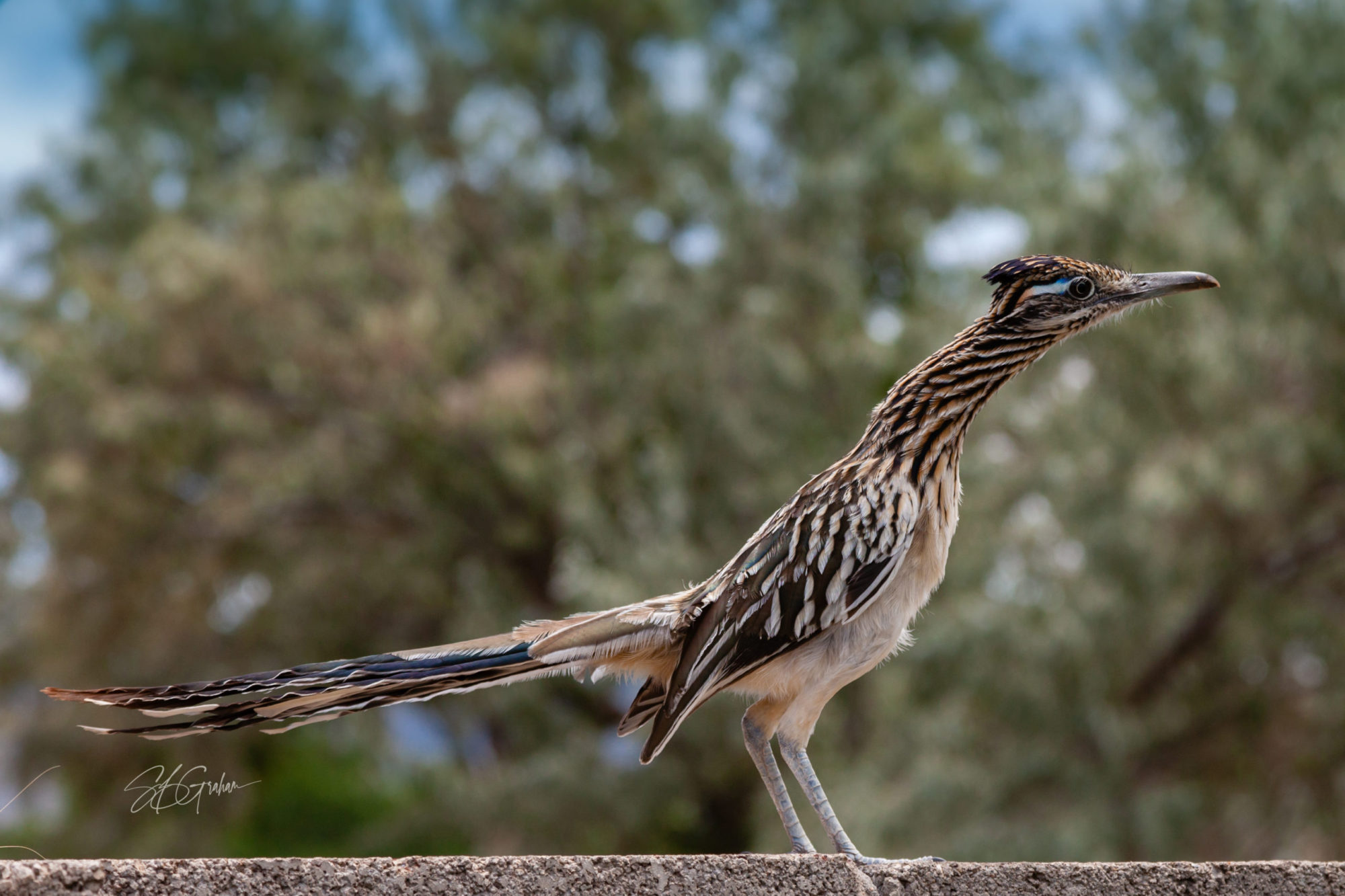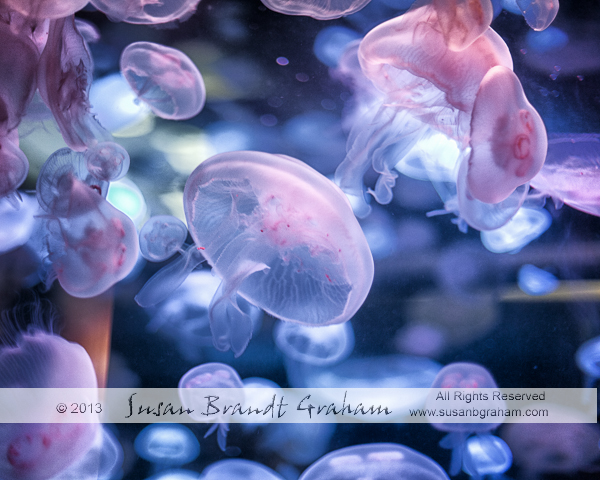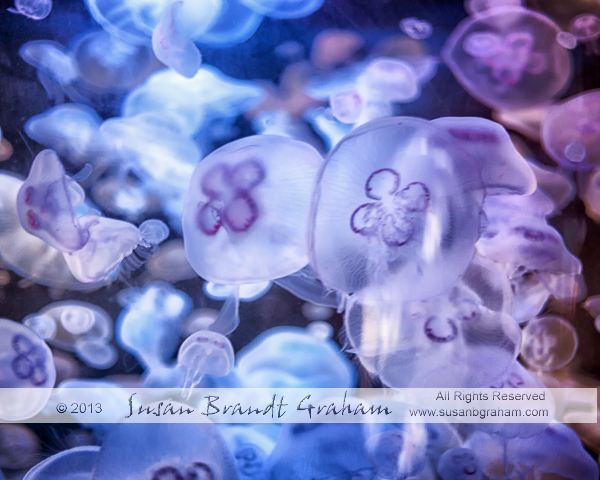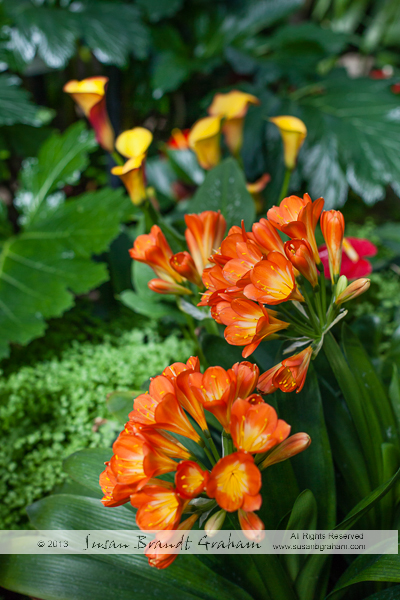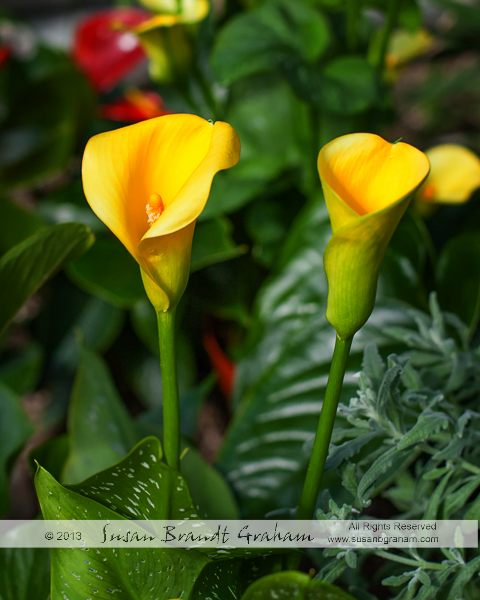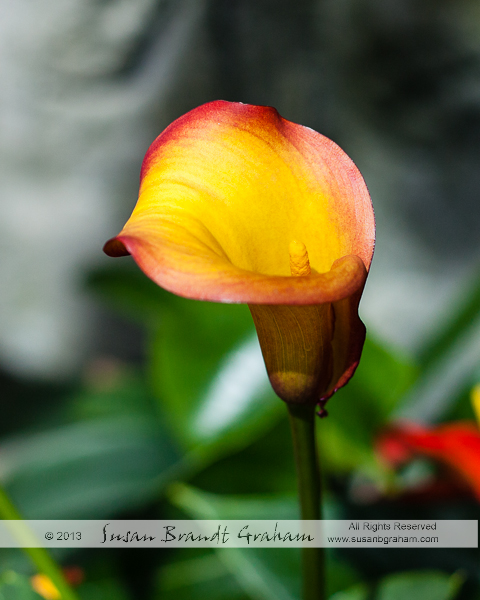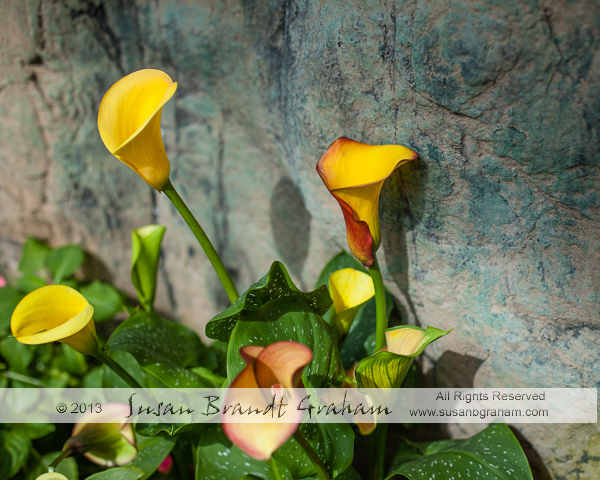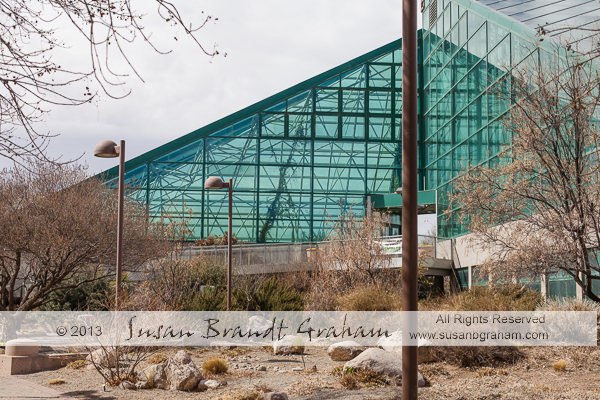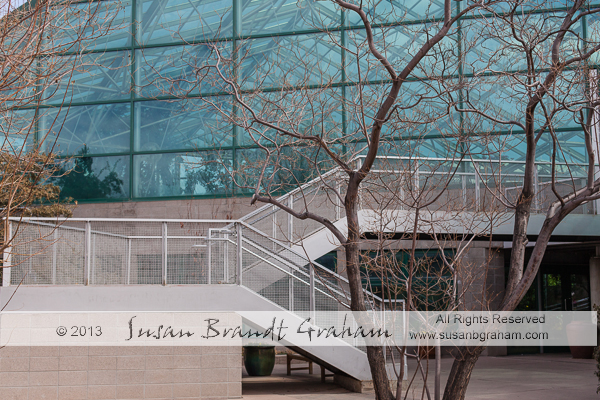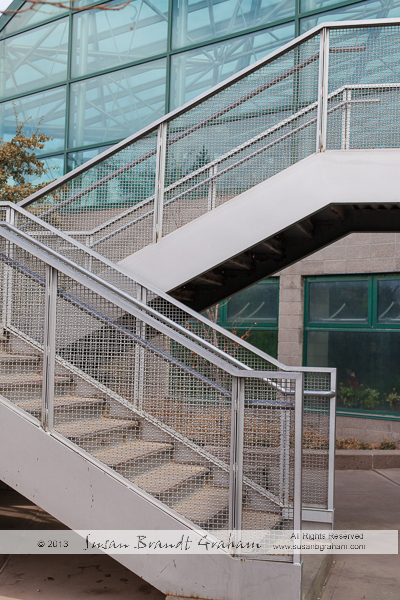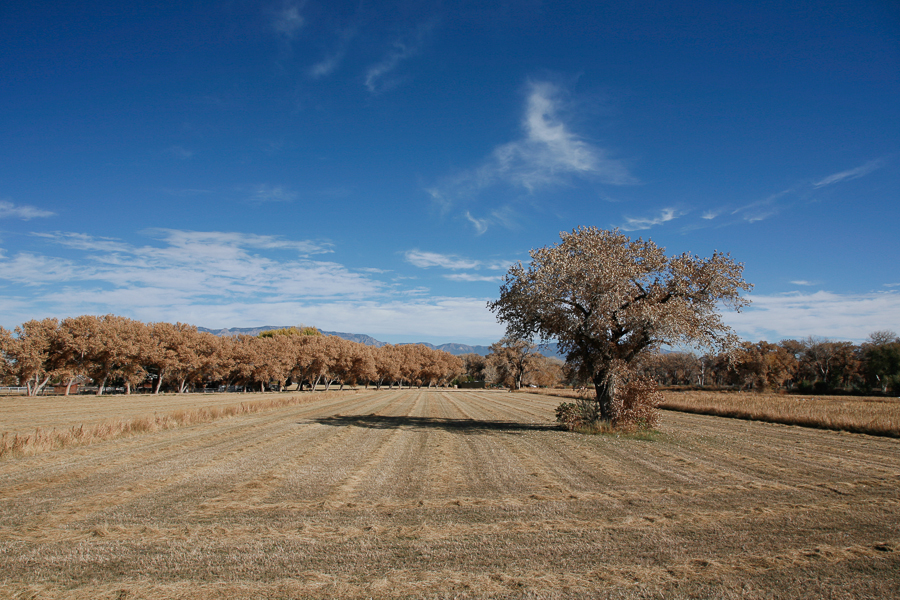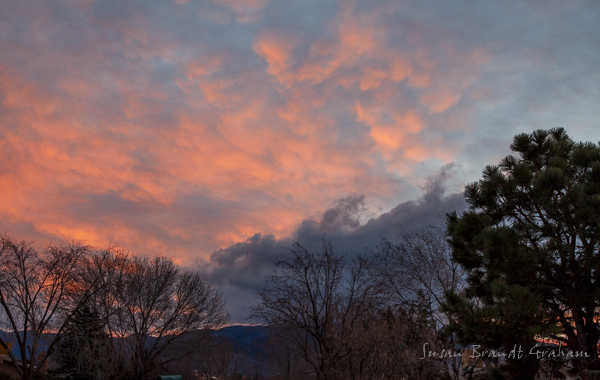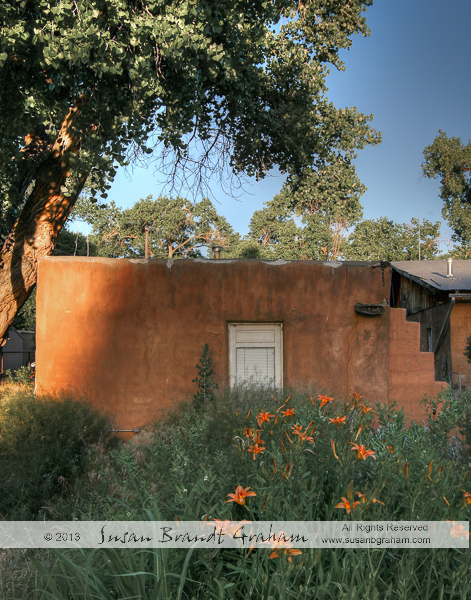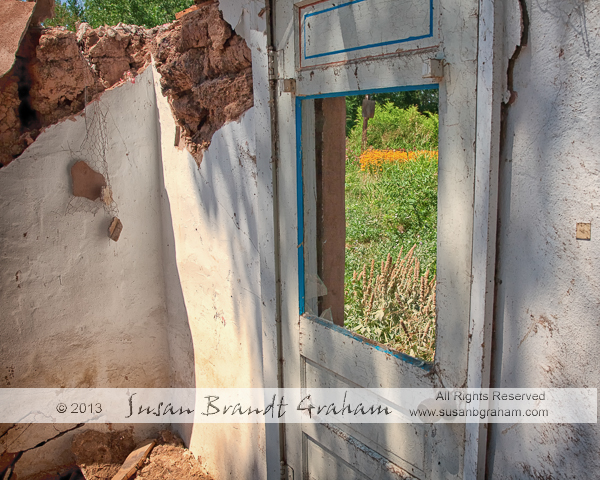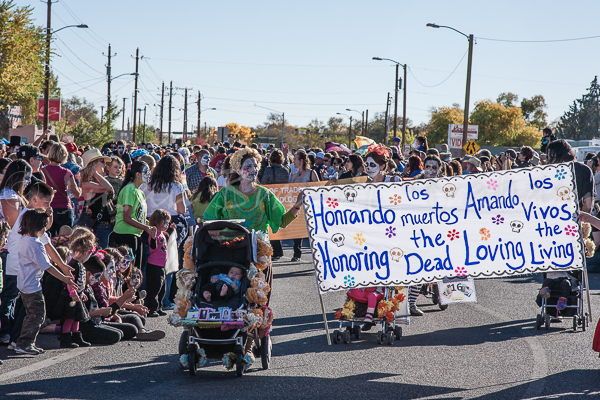Spirits of the Old Adobes
Every now and then it is fun to play with images that were taken at different times, for different reasons, and to combine them for a new purpose.
Regular readers here, as well as my friends, know that I have been working on collecting images of adobes, especially old and/or abandoned ones, or those being demolished. I also have some images showing “mudding,” in an attempt to preserve some of structures. These adobes, in various states of repair and disrepair, are an integral part of the New Mexico landscape.
Those of you who know New Mexico are also aware that commonly seen here are celebrations that are uncommon in other parts of the United States. El Dia de los Muertos (“Day of the Dead”) is observed throughout parts of New Mexico, both through decorations and the large Muertos y Marigolds parade in Albuquerque’s South Valley.
The following images are composites made from photographs from both the Adobe Project and the Border Celebrations projects. I did them for fun. I hope you enjoy them, also.
These images are available for purchase here.
